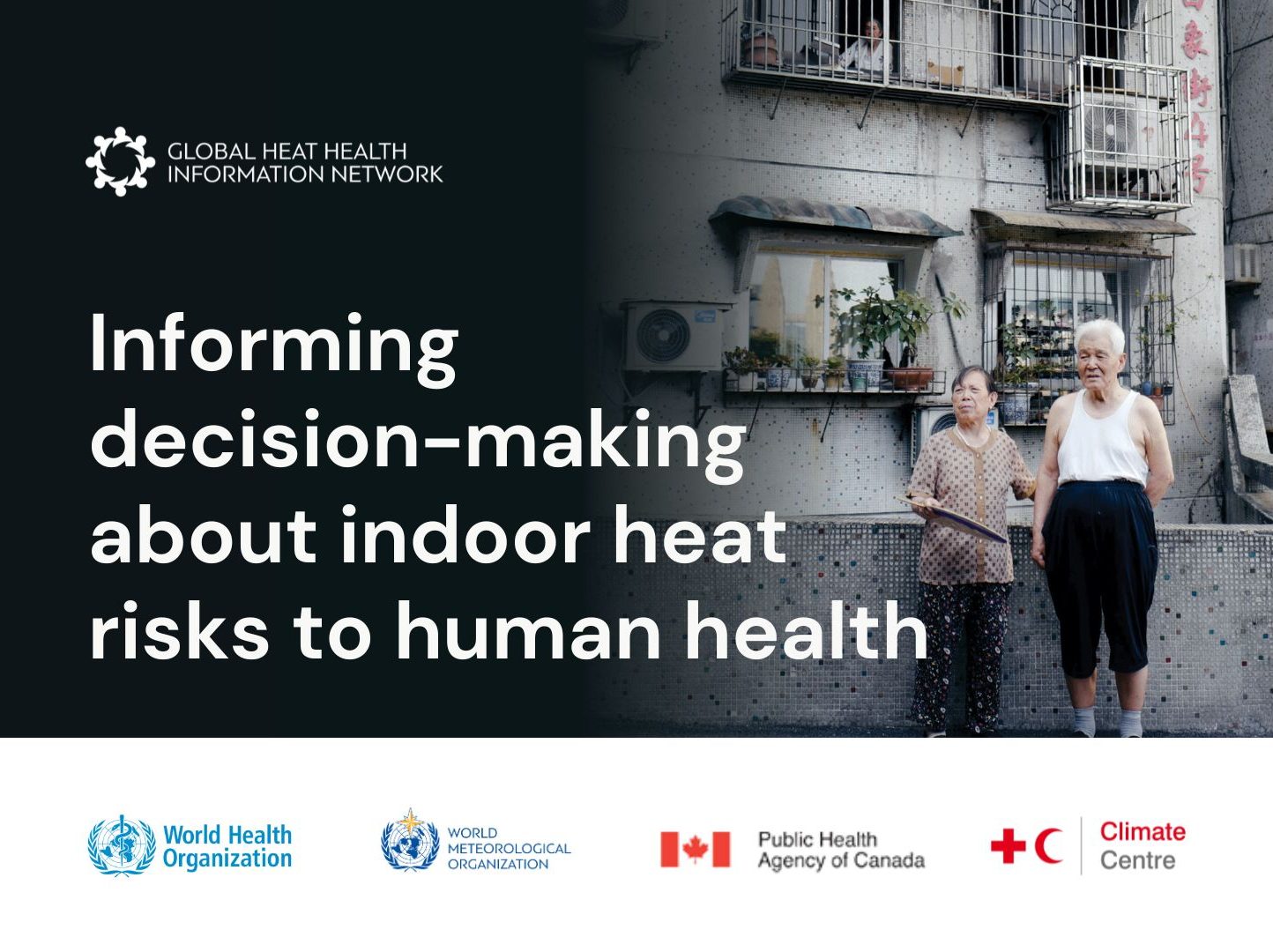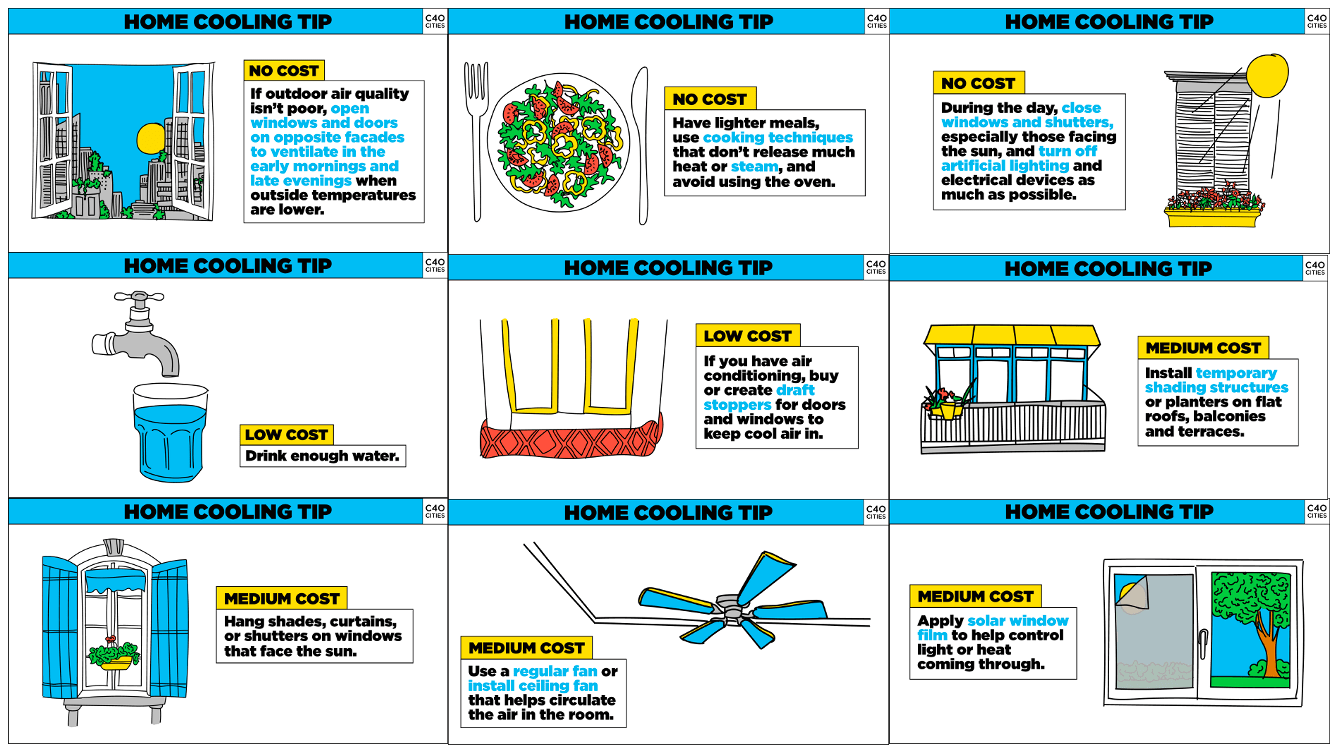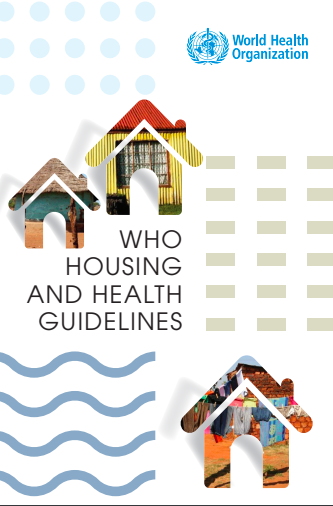Many people around the world face serious health risks from high temperatures inside their own homes.
- Dangerous heat conditions can occur indoors, regardless of whether a heatwave is declared.
- High day and night time indoor temperatures pose significant health risks, particularly for older people.
- Barriers to maintaining safe indoor temperatures include energy and cooling access, housing materials and design, and socio-economic conditions.
- Managing indoor temperatures requires context-appropriate decision making and technology to balance cooling needs, costs, and the environmental impacts of air conditioning.
The Risk
High outdoor temperatures result in high indoor temperatures which must be managed to maintain healthy indoor thermal comfort conditions. Protection against heat is a key characteristic of healthy housing.
Air conditioning is a lifesaving intervention in dangerously
hot conditions. Unfortunately, it comes with significant environmental trade offs and is not accessible to many experiencing energy poverty, homelessness, or other factors limiting access to and the use of air conditioning.
Air conditioning, insulation, certain building materials, wall thickness, shading from direct sunlight, natural ventilation (especially during night time), and increased air motion (fans) to cool indoor temperatures can help protect people against heat and heat-related illness. However, large numbers of people in developing countries, as well as low-income groups in developed countries, do not have access to such housing facilities. As a consequence, low socioeconomic groups are at higher risk of heat-related mortality.
Air conditioning can also reinforce health inequalities by exacerbating urban noise and heat, which negatively affect the health of others, particularly those who cannot afford air conditioners. Air conditioning contributes to climate change, with knock-on effects on health, due to heavy energy consumption and use of powerful greenhouse gases as coolants. Source WHO Housing and Health Guidelines
Indoor Thermal Comfort and Safety
- WHO recommends “in populations exposed to high ambient temperatures, strategies to protect populations from excess indoor heat should be developed and implemented.”
- Estimated minimal risk temperature for heat-related health effects and maximum acceptable temperature vary by geography. Source WHO Housing and Health Guidelines
- Few building standards exist for maximum safe indoor temperatures in domestic housing and residential centers.
- Additional research is needed to strengthen evidence on impacts of high indoor temperatures. Source Learn more: WHO Housing and Health Guidelines
Management and Adaptation Solutions
To achieve safe indoor temperatures during hot weather, context-appropriate decision making can help balance cooling needs, costs, and environmental impacts of air conditioning.
Residential cooling
To achieve indoor thermal comfort cooling options should consider combining active and passive cooling systems, appropriate housing design and materials, and green space which shades housing. Cooling efficiency depends on the level of control and comfort desired by the resident, as well as the local climate and humidity levels (e.g. dry-heat or humid-heat). Tool tip Active and passive cooling methods for dwellings: A review
Active cooling systems
Active cooling systems require electricity, to reduce indoor temperatures. Three principle systems include:
Fans cool people, not rooms and will not reduce indoor temperatures. Using a fan can be more harmful than helpful when indoor air temperatures are hotter than your body temperature. Source When it’s Too Hot for a Fan
Ceiling circulation fans can redistributing warm air that collects along the ceiling and help with ventilation and evacuating indoor heat. Source Healthy Housing Reference Manual, Chapter 12 Tool tip Learn more: Should Electric Fans Be Used During a Heat Wave?
Refrigerative air conditioning, removes heat and humidity to maintain a comfortable indoor temperature even under the most severe outdoor conditions. It allows for the greatest control over indoor conditions, but comes with environmental trade offs. It emits waste heat into the outdoor environment, and requires significant energy demand that further contributes to climate change, if energy is not from renewable sources. Source Healthy Housing Reference Manual, Chapter 12
Evaporative coolers cools an airstream by evaporating water into it; the airstream’s relative humidity increases while the dry-bulb temperature decreases. It can be a relatively inexpensive and effective method of cooling in dry climates. The simplest direct systems use a pump to supply water to a saturated pad over which the supply air is blown. Indirect systems use a heat exchanger between the airstream that is cooled by evaporating water and the supply airstream.
Evaporative coolers provide high levels of ventilation because they typically condition and supply 100% outside air, have lower installation and operating costs than electric air conditioning, and no ozone-depleting refrigerant is involved. The disadvantages are that bacterial and fungal contamination can result if not properly maintained and they are only appropriate for dry, hot climates.
Passive cooling measures
Passive cooling systems use no electricity. They can be used to cool homes and other indoor environments when electricity or air conditioning is not available, or to reduce the need for air conditioning. Three main approaches include:
Blocking the Heat Limiting the heat absorbed by a building through the use of insulation, reflective barriers and shading can significantly reduce summer heat gain and reduce cooling needs. Exterior shading with trees or barriers, and interior shading through window blinds and shades will effectively reduce indoor heat gain. Light colored exterior wall and roof colors (e.g. cool roofs) can reflect the sun and prevent your home from absorbing as much heat, thereby keeping it more comfortable inside.
Limit Interior Heat Sources Limiting the use of heat producing appliances, incandescent lights, and indoor cooking can reduce indoor temperatures.
Removing Interior Heat Removing heat through thermal creation of siphoning effects (pull heat up and out), roof vents, natural ventilation (open windows and doors), and use of ceiling fans is important when indoor temperatures are higher than outdoor temperatures. Approaches to maximize cooler nighttime temperatures by ventilating a house at night, and using shading techniques during daytimes can significantly reduce indoor temperatures.
Increased outdoor noise levels, pollution, and security issues can make relying on open windows a less attractive option in some locations. Source Healthy Housing Reference Manual, Chapter 12 Tool tip Learn more: Natural Ventilation
Key Resources
Report
Toolkit
Guidance
Learn More
For information on personal cooling and heat illness detection and management, visit our section on managing and adapting to heat in the body.


